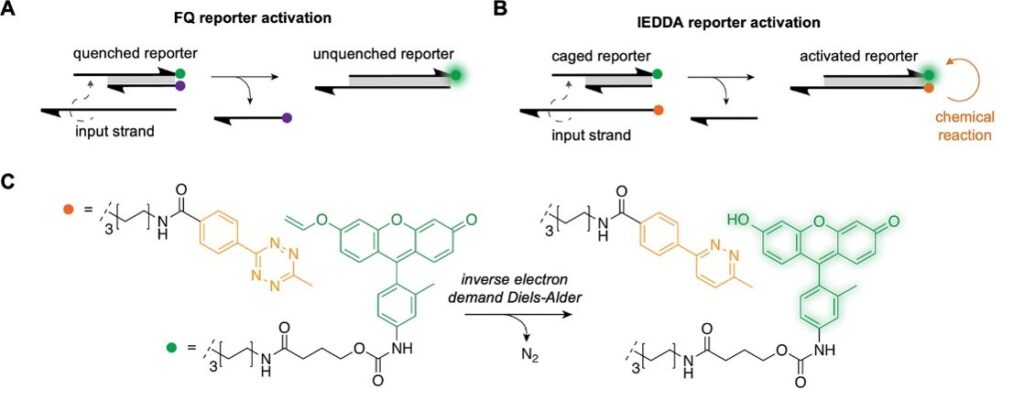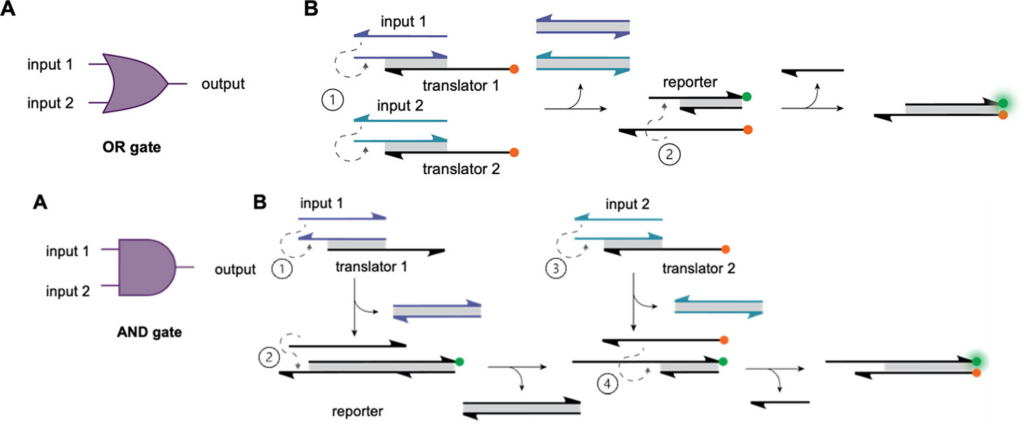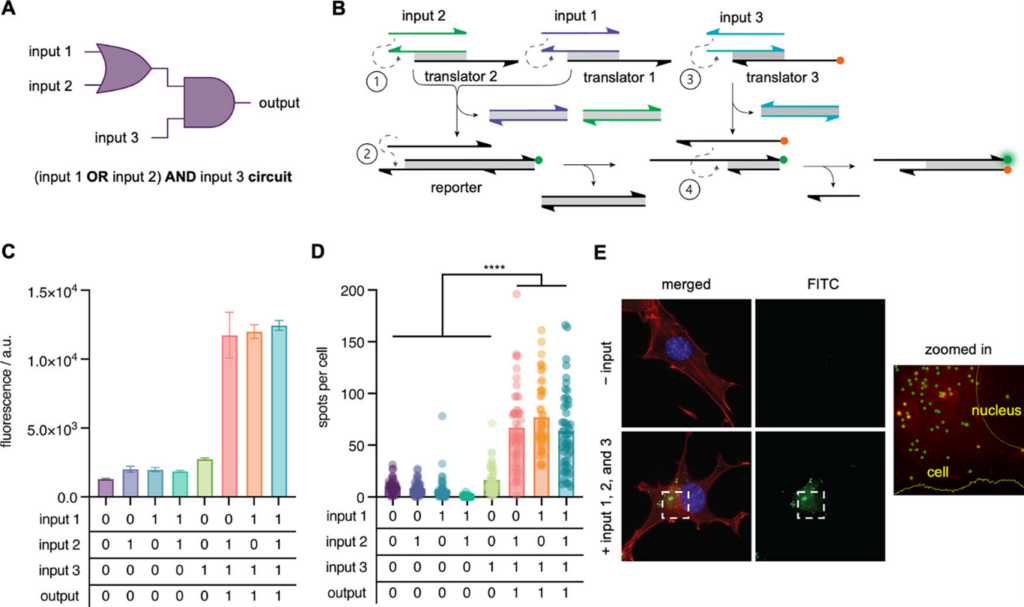Title: DNA Logic Gates for Small Molecule Activation Circuits in Cells
Authors: Cole Emanuelson, Anirban Bardhan, and Alexander Deiters
Journal: ACS Synthetic Biology
Year: 2024
DOI: https://doi.org/10.1021/acssynbio.3c00474
ACS Synth. Biol. 2024, 13, 2, 538–545
Logic gates, commonly associated with computers, are fundamental building blocks of digital electronics. They perform logical operations (like AND, OR, NOT) based on input signals to produce specific output signals. These operations are the basis of all computations in modern technology—from your smartphone to the internet. Now, picture the same concept applied on a molecular scale. DNA logic gates operate using similar principles but instead use DNA strands that interact with each other to complete the circuit. They can be programmed to receive input signals (in the form of specific DNA sequences) and produce output based on visualizable signals, like fluorescence! DNA logic gates hold immense promise in the development of smart therapeutics and diagnostics that can detect diseases at the molecular level responding to specific cellular conditions. However, the application of these DNA-based logic gates physiologically face formidable challenges because of the dynamic cellular environment and the presence of nucleases, that chop off DNA strands. For example, existing DNA logic gates that use fluorescence turn-on as a reporter signal, suffer from poor signal-to-noise ratio.
Emanuelson et al. developed a novel system to address the current complexities in the design and efficacy of existing cellular DNA computation devices. This is based on an organic reaction called the “Inverse Electron Demand Diels Alder” or IEDDA. Instead of traditional Diels Alder reactions, where the diene has a normal arrangement of double bonds, in IEDDA, the diene contains a special arrangement that makes it more reactive. This diene is often called a “strained” or “activated” diene because its structure is eager to react. This design significantly improved the non-specific increase in fluorescence, which is known to be the primary source of background noise in the previously published reporters.

Their design has a reporter DNA strand hybridized to a shorter blocking strand. The reporter is a “caged” fluorophore because the fluorescence is blocked due to the presence of a vinyl ether functional group, as shown in the figure below. However, once an input DNA strand is provided, which carries a tetrazine group, the shorter blocking strand is displaced, bringing the caged fluorophore (dienophile) and the tetrazine (diene) group in proximity. This induces the IEDDA reaction, which leads to removing the caging group and the turning on of fluorescence. Their reporter significantly reduces unspecific degradation because the signal turn-on depends on the proximity of the reacting molecules in a very specific way. Using this system, they designed several logic gate operations like the (i) AND Gate, which gives a positive output only when both input signals are positive, (ii) OR Gate, which gives a positive output when either of the input signals is positive and also (iii) multi-layer OR-AND Gates.

In the OR-AND logic circuit using DNA, three inputs (input 1, input 2, and input 3) interact with translator gates and a reporter gate. Here’s how it works: either input 1 or 2 must be present to activate translator 1 or 2, releasing a strand that sticks to the reporter gate. At the same time, input 3 activates translator 3, which carries the tetrazine modification. This translator 3 strand then hybridizes to the reporter, bringing the reactive groups close to each other and inducing the reaction.

They tested all of their developed DNA logic gates in cells and could observe distinct signals from the reporter, which confirmed their claims of the robustness of the new IEDDA-based DNA logic gates. This is a new frontier in synthetic biology and a step forward in designing stable DNA-based devices that can be seamlessly integrated into intracellular environments. The presence of modifications on the DNA strands in the form of diene and dienophiles makes them less susceptible to nuclease degradation. This allows standard DNA backbones with predictable folding and interactions to be translated into stable DNA-based circuits.

